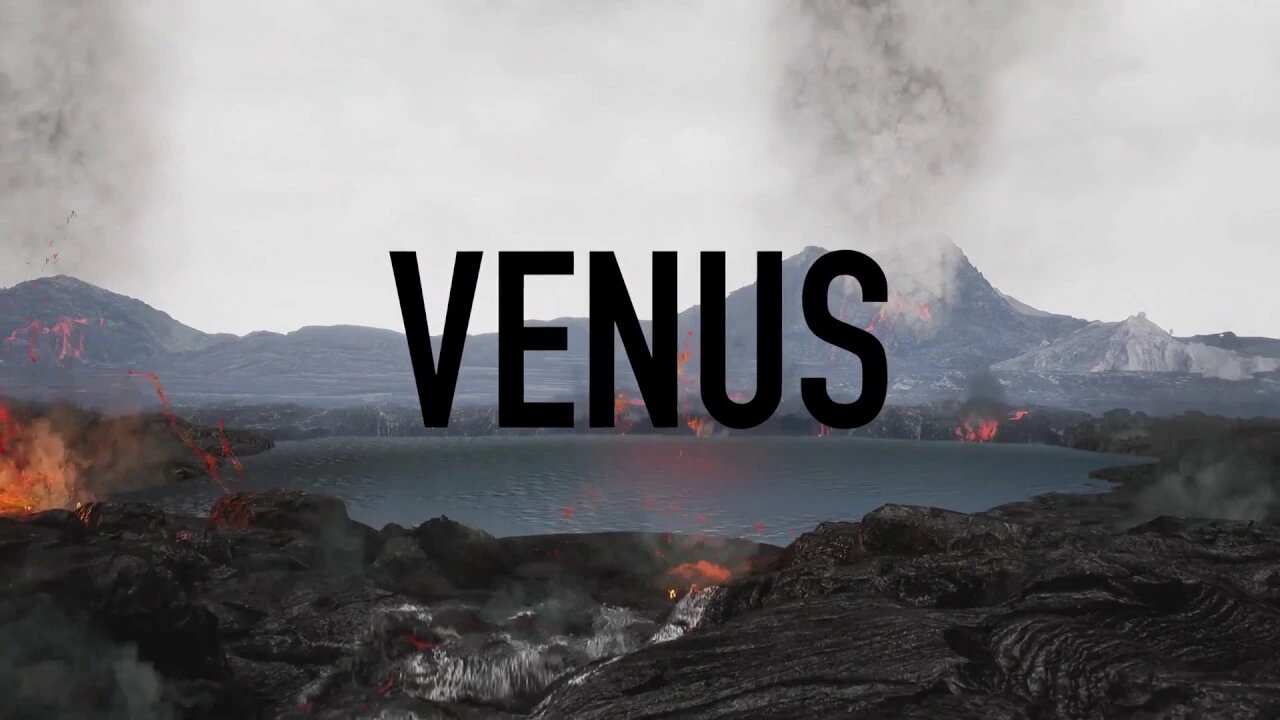Premium Only Content

Venus in a Minute
Our sister planet Venus could serve as a model for many exoplanets soon to be discovered in the upcoming era of new space telescopes such as James Webb and others. Venus may have been far more Earth-like than its present climate state, which is inhospitable and more like that inside a pressure-cooker oven with surface temperatures of 450 C and pressures equivalent to 1,000 meters under the sea. How did Venus evolve from a past "habitable" state to its present one, and how does that help us understand our own destiny?
What is missing is essential information about the chemistry of Venus' massive atmosphere and how it is organized from top to bottom. Missions that measure the detailed chemistry of the atmosphere from the top of the cloud deck to the hot near-surface have not been flown since the 1970s and 1980s. We now have an opportunity to get back with modern sensors and spacecraft that could establish Venus as a "window on the universe." It is now possible to use forensic chemistry methods to decipher the history of Venus oceans, whether volcanoes are erupting now or in the recent past, and how the vast highlands of Venus are structured both compositionally and in 3D. We can combine satellite observations and those from heavily-instrumented probes and landers to reveal the wonders of Venus and potentially to help scientists understand how planets similar to our own become uninhabitable.
Credit: NASA's Goddard Space Flight Center
James Tralie (ADNET):
Lead Producer
Lead Editor
James Garvin (NASA, Chief Scientist Goddard):
Scientist
Stephanie Getty (NASA/GSFC):
Scientist
Narrator
Giada Arney (NASA):
Scientist
Natasha Johnson (NASA/GSFC):
Scientist
Aaron E. Lepsch (ADNET):
Technical Support
Music Credit: "Save us All" by Alec Michael Harrison via Universal Production Music
This video is public domain and along with other supporting visualizations can be downloaded from the Scientific Visualization Studio at: https://svs.gsfc.nasa.gov/13640
If you liked this video, subscribe to the NASA Goddard YouTube channel: https://www.youtube.com/NASAGoddard
Follow NASA’s Goddard Space Flight Center
· Instagram http://www.instagram.com/nasagoddard
· Twitter http://twitter.com/NASAGoddard
· Twitter http://twitter.com/NASAGoddardPix
· Facebook: http://www.facebook.com/NASAGoddard
· Flickr http://www.flickr.com/photos/gsfc
SpaceExploration, GoddardSpaceFlightCenter, NASA, Venus, SolarSystem, PlanetaryScience,
Subscribe now for more videos from over 280 sources plus my own videos!
Subscribe to my entertainment channel too or at least peek at my other channel !!! https://www.youtube.com/channel/UCiNFsoytAuun90UzU5AuxXg
https://www.bitchute.com/channel/YsJ0PYUWx5An/
https://www.patreon.com/user?u=26453564
-
 5:16
5:16
Kurt's News
23 days agoJim Jordan GRILLS FEMA Chief After Workers SKIP Pro-Trump Homes
56 -
 2:44
2:44
Memology 101
6 hours ago $0.22 earnedWhat a snake...
7723 -
![🔴LIVE : THE FINALS Season5 [The World's STRONGEST Gamer] 1080p 60fps](https://1a-1791.com/video/s8/1/4/m/-/L/4m-Lv.0kob-small-LIVE-THE-FINALS-Season5-The.jpg) 2:14:36
2:14:36
PacPowerTV
5 hours ago🔴LIVE : THE FINALS Season5 [The World's STRONGEST Gamer] 1080p 60fps
54K9 -
 5:11:27
5:11:27
Joe Donuts Gaming
6 hours ago🟢Live : City Boy Inherits A Ranch 😧😓
31.2K5 -
 3:41:12
3:41:12
Fresh and Fit
12 hours agoDaniel Penny ACQUITTED & BLM Meltdown
87.6K23 -
 42:46
42:46
barstoolsports
10 hours agoThe Shred Line with Coach Gruden, Dave Portnoy and Steven Cheah | Week 15
60.5K4 -
 3:43:53
3:43:53
EricJohnPizzaArtist
6 hours agoAwesome Sauce PIZZA ART LIVE Ep. #27: Christmas Special! Dr. Disrespect is Coming to Town!
35.5K8 -
 1:42:14
1:42:14
TheDozenPodcast
13 hours agoConnor McGregor, Raoul Moat, Burglary, BKFC Heavyweight Champion: Mick Terrill
57.4K3 -
 2:10:02
2:10:02
vivafrei
16 hours agoEp. 241: Stephanopoulos PAYS for Defamation! Accused CEO Shooter Gets ELITE Attorney! Drone Madness
176K100 -
 6:05:13
6:05:13
Right Side Broadcasting Network
6 days agoLIVE REPLAY: NYYRC 112th Annual Gala Ft. Steve Bannon, Nigel Farage, and Dan Scavino - 12/15/24
227K15